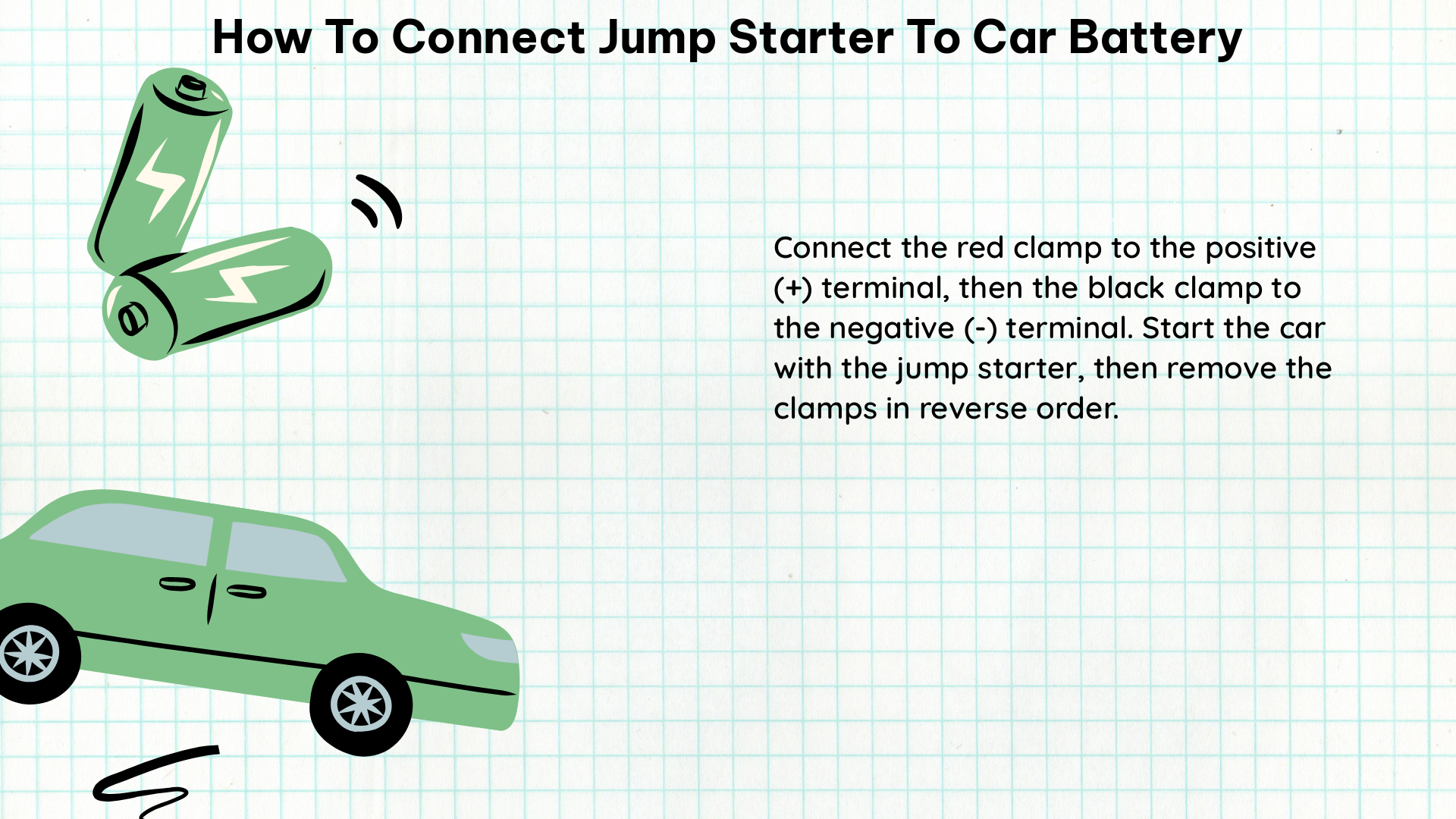Jumpstarting a car with a dead battery can be a lifesaver, but it’s crucial to do it correctly to avoid potential damage to your vehicle’s electrical system. In this comprehensive guide, we’ll walk you through the step-by-step process of safely connecting a jump starter to a car battery, ensuring a successful jumpstart every time.
Identifying the Battery Terminals
The first step in jumpstarting your car is to locate the positive (+) and negative (-) terminals of the car battery. The positive terminal is typically marked with a “+” sign or the letters “POS,” while the negative terminal is marked with a “-” sign or the letters “NEG.” It’s essential to correctly identify these terminals to avoid any potential short circuits or damage to the battery or jump starter.
Connecting the Positive (Red) Clamp

Once you’ve identified the battery terminals, it’s time to connect the jump starter. Start by attaching the positive (red) clamp of the jump starter to the positive (+) terminal of the car battery. Make sure the clamp is securely attached to the terminal, as a loose connection can prevent a successful jumpstart.
Connecting the Negative (Black) Clamp
Next, connect the negative (black) clamp of the jump starter to an unpainted metal part of the engine block, away from the battery and the carburetor/fuel-injection system. This will ground the jump starter and provide a safe path for the electrical current. Avoid connecting the negative clamp directly to the negative (-) terminal of the battery, as this can create a spark and potentially cause an explosion.
Turning on the Jump Starter
With the clamps properly connected, it’s time to turn on the power of the portable jump starter. Refer to the manufacturer’s instructions for the specific steps to power on your jump starter. Most jump starters have a built-in display or indicator lights that will let you know when the device is ready to provide a jumpstart.
Attempting to Start the Car
Once the jump starter is powered on, try starting the car as you normally would. If the car starts, it’s a good sign that the jump starter has successfully provided the necessary power to the battery. If the car doesn’t start, you may need to wait a few minutes and try again.
Removing the Jump Starter Clamps
If the car does start, it’s important to remove the jump starter clamps in the reverse order that they were attached. First, disconnect the negative (black) clamp from the engine block, and then remove the positive (red) clamp from the battery terminal. This will ensure that there are no sparks or short circuits as you disconnect the jump starter.
Considerations for a Completely Drained Battery
It’s important to note that jump starters should not be used to start a car with a completely dead battery. If the battery is completely drained, it may not have enough charge to accept a jump start. In this case, the battery may need to be replaced or recharged using a dedicated battery charger.
Safety Precautions
When using a jump starter, it’s crucial to follow the manufacturer’s instructions and safety guidelines. Jumpstarting a car can be dangerous if not done properly, and can cause damage to the car’s electrical system if not done correctly. Always wear protective eyewear, keep the jump starter and battery terminals away from any moving parts, and avoid smoking or using open flames near the battery.
Conclusion
Jumpstarting a car with a jump starter can be a straightforward process, but it’s essential to follow the proper steps to ensure a safe and successful jumpstart. By carefully identifying the battery terminals, connecting the clamps correctly, and following the manufacturer’s instructions, you can get your car back on the road in no time. Remember to always prioritize safety and consult the jump starter’s manual for any specific instructions or precautions.
References
- How to Safely Use a Power Bank Jump Starter to Jump a Car
- How to Use a Portable Jump Starter (Step-by-Step Guide)
- How to Jump Start a Battery – Quick Lane® Tire & Auto Center

The lambdageeks.com Core SME Team is a group of experienced subject matter experts from diverse scientific and technical fields including Physics, Chemistry, Technology,Electronics & Electrical Engineering, Automotive, Mechanical Engineering. Our team collaborates to create high-quality, well-researched articles on a wide range of science and technology topics for the lambdageeks.com website.
All Our Senior SME are having more than 7 Years of experience in the respective fields . They are either Working Industry Professionals or assocaited With different Universities. Refer Our Authors Page to get to know About our Core SMEs.